When it comes to photography the exciting things to review are cameras, lenses, films, and developers. But there are a tonne of other things that go into photography beyond the main kit. There are of course light meters, I’ve reviewed several of them in the past, both here on the blog and over on my YouTube channel. There are also flash units, but while I have flashes for all my main camera kits, I don’t use them that often, but they’re still good to have. But what about all those extra bits that don’t get the staring role, relegated to be mentioned in the background. In today’s post I’m going to do a few short reviews of some of the interesting bits of kit I’ve managed to acquire and use in my day-to-day photography that don’t get star mention.
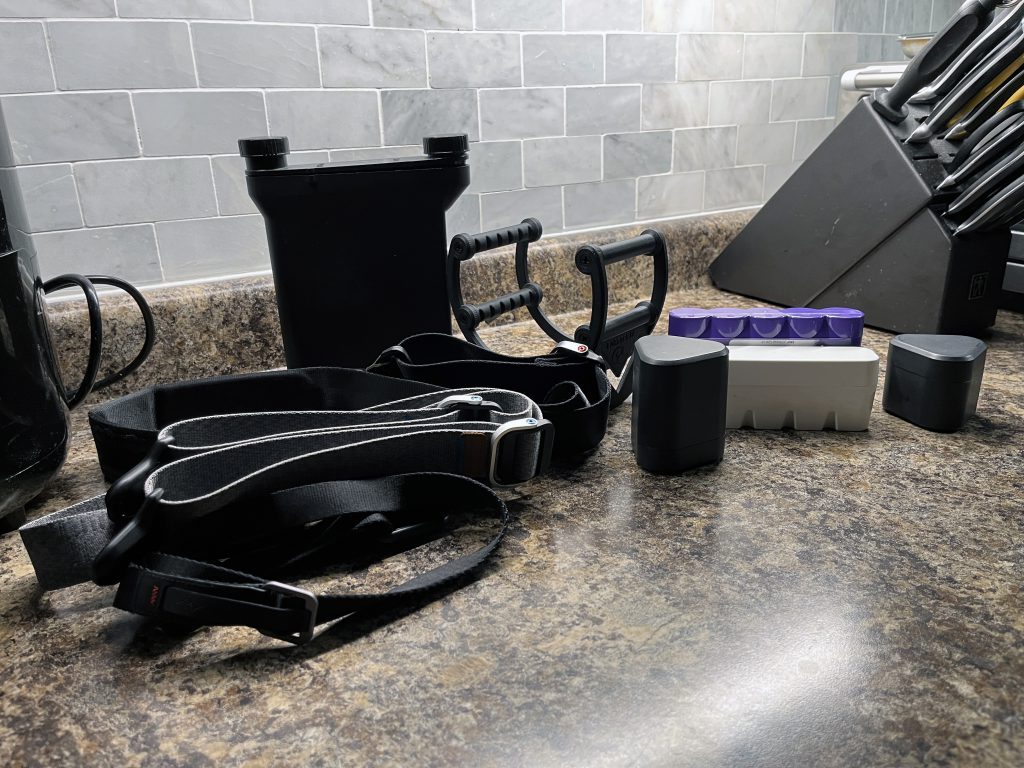
Peak Design Camera Straps
One thing that is often overlooked in the camera world is the camera strap. Most people run around with whatever stock strap came in the box with your camera. Or they go all out and get something that looks more like it belongs in a dungeon or a club of a particular repute. But of all the straps I have ever used, the one that has stuck with me the most is the Peak Design strap system. I started with just a pair of straps, the biggest and the smallest, but have since gone on to have two big straps, a medium strap and two small straps. But why do I have so few straps (five is a little) compared to the number of different cameras in my kit? The reason is that I can swap these straps easily between the other cameras using many anchors. That means I can connect multiple anchors to a camera and easily switch the strap configuration on cameras like the Maxxum 9 and 600si Classic with a secondary connection point on the vertical grip.
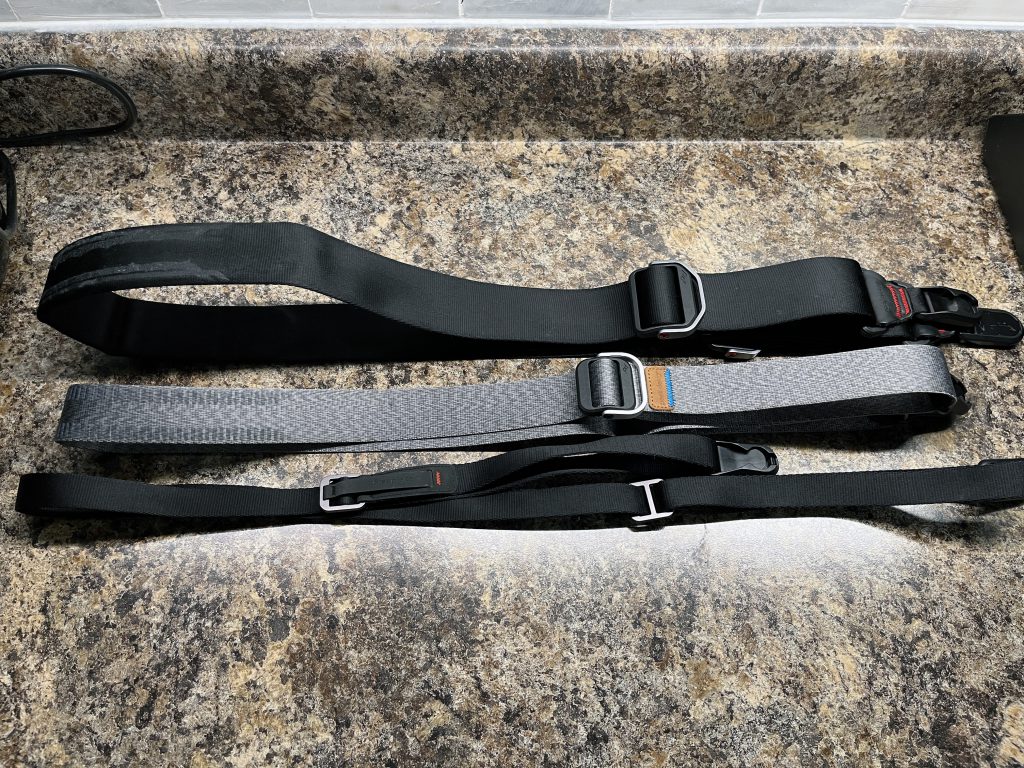
The best part about having the three different sizes is that I can tune the strap size to the camera/lens combination I use. The big straps are great for my Mamyia m645, D750 (with the grip and a heavy lens), the Maxxum 9, and other similarly sized ‘pro’ bodies. The medium strap is perfect on my Rolleiflex, 600si Classic, Nikkormat, D750 (with a smaller lens both with and without the grip), and other medium-sized SLRs. The smallest straps are perfect for my a6000, FE/FE2, Maxxum 70, F65 and EOS 3000. The one downside is that these straps are costly, but you don’t need to have too many, and the sturdy anchors don’t last. Thankfully, you don’t need to buy a whole new strap to replace the anchors, and they do have a warning system with yellow and then red cores to indicate wear and tear. Despite looking weak, they are relatively strong, and switching out straps on the fly is easy. They fold up nicely and flat for easy transport.
Platypus Film Dryer
For many of us, the reality of home processing is that our lab is in whatever room we make it, and that includes needing space to dry film. My usual method is to let my sheets of 4×5 hang dry using repurposed pants hangers with rubber coated edges. And those do a fine job, but tend to leave a bit of a mark at the corner. Again, no big deal, you can edit those out, but what if there were a better way to let your film drip dry and leave no marks? Well that is the basis of the Simon Forster Photographic Platypus. The device is produced using 3D printed parts, and can only be fitting in the correct way, with special sockets and pegs, then secured using coated screws. I had mine put together in under ten minutes, and all I needed is a Phillips Screwdriver.
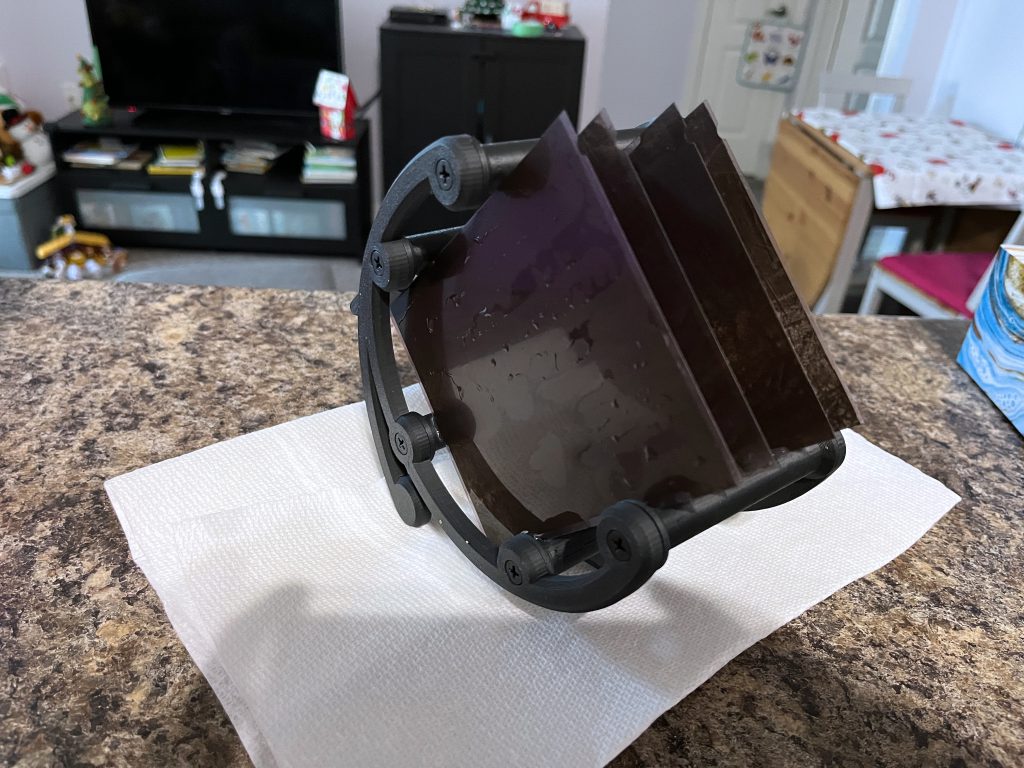
This wonderful piece of equipment is a welcome addition to my home development lab, allowing me to dry up to six sheets of 4×5 film or six plates in the same size, yes it is multipurpose and will be handy when I finally do a review on Zebra Dry Plates. You can set the drying rack in either a tilted or up and down position depending on space and how your media is drying. And it works perfectly, my film dried beautifully and there wasn’t a water spot on my sheets. It’s small, light weight and affordable! Costing only £29.99 (4 sheets), £36.99 (6 sheets) through Simon’s online store. You can also get it in both black and orange, I went with the black because it suits the rest of my gear.
Film Holders
One of the most annoying things is carrying around a lot of film; it rattles around in your camera bag and sometimes gets lost. Enter the wonderful world of film holders. I have a couple of options available in 35mm and 120 formats. The first is the JCH-made five roll cases; I have one in purple for 120 and two in white for 35mm. The second holder is triangular-shaped, holding three rolls of either 120 or 35mm, and comes from a Mexican company that I still need to learn to operate. Both holders are well made and have good build quality. While both do the same thing, they are wildly different in size and format. The JCH containers are great because you can fit five rolls, and being flat means they’ll do anywhere without too much trouble. The Mexican holders are triangular, which might turn some people off. But they work rather well because you can fit them in a much smaller space, and while they only do three rolls, they’re excellent for smaller trips.
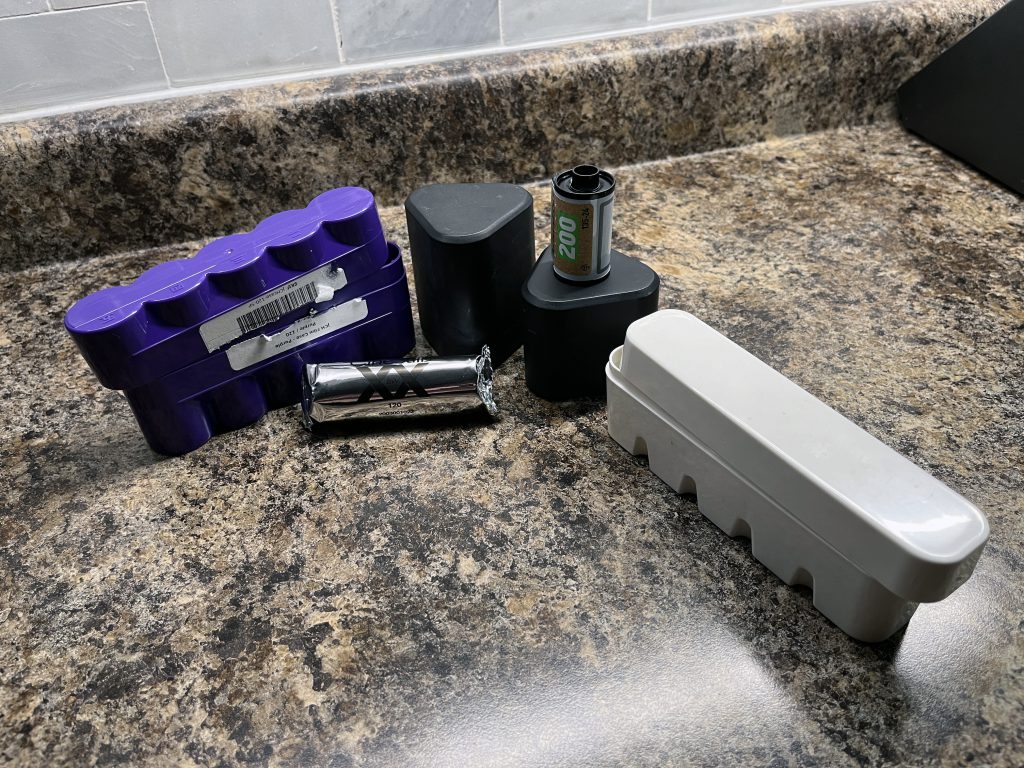
The biggest issue with the Mexican containers is that you cannot fit a fully foiled roll of 120 films into the container; you must take it out of the foil first, which is only a minor inconvenience. But as someone who looks at a roll of film to see if it’s exposed, having a roll of 120 without the foil means it’s been shot. I could always pull it out and see if the exposed tape is sealed. For the JCH holders, it comes down to size; the five rolls in the linear layout take up a lot of space, not much, but certainly more flat than the Mexican containers. Ultimately, it comes down to where I’m going and how many rolls I’ll need. I use the JCH containers for longer trips, while the Mexicans are great for small photo walks, but I also use them to keep rolls waiting for development in one place and a dark environment.
Stearman Press SP-445
When it comes to home processing of 4×5 sheet films, the availability of modern developing tanks was until several years ago rather limited. Most people stuck with older equipment, the Yankee Tank, or the good old Hangers & Tanks. There is nothing wrong with these two options, however there are drawbacks. First, Yankee tanks are notorious for leaking, but do allow for daylight processing of large quantities of film. Hangers and tanks are good for fragile emulsions, but require a darkroom. Then in 2016 a small company called Stearman Press decided to build a new daylight 4×5 processing tank from scratch. Using Kickstarter, they successfully crowd funded the tank and I was among the backers. The SP-445 is exactly what is says in the name, it can develop four sheets of 4×5 at one time. What made this different from my previous method of using a print drum on a rotating base is that I could develop four sheets at one time using a little less than 500mL of chemistry.
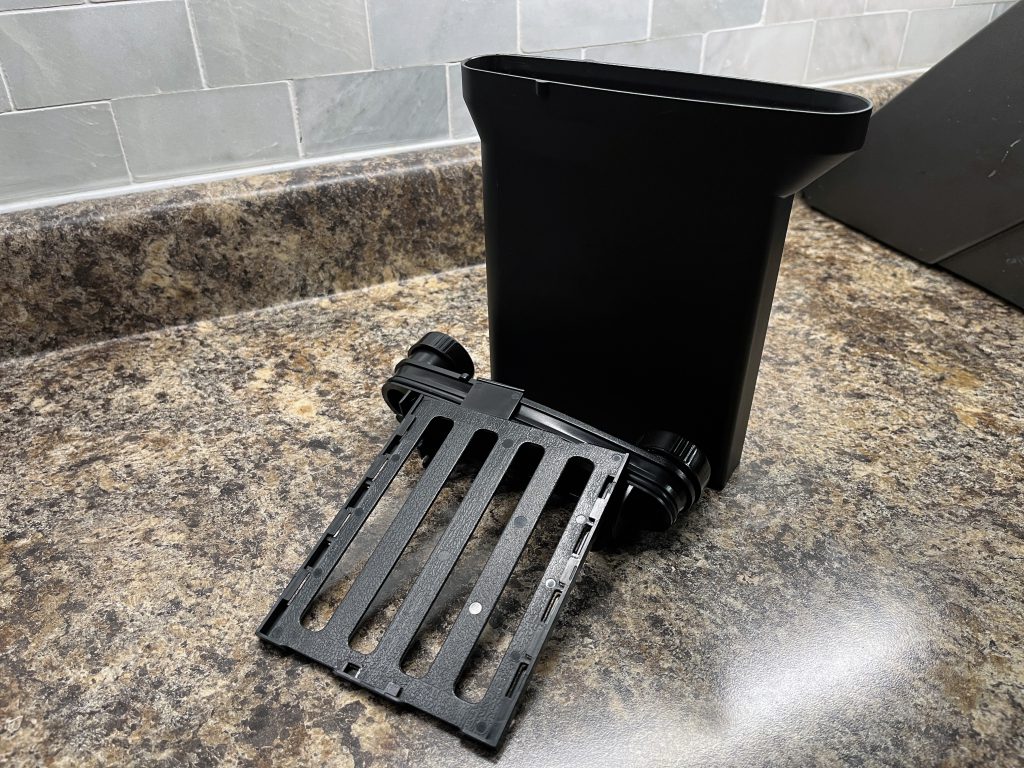
I’m still using my original tank today, but have since done some updates. The biggest issue that was faced with the original SP-445 kit is the film holders. These Mk. 1 holders were single pieces of plastic with ridges, to allow for chemistry to flow around the film itself. The problem is that with the unibody design and the ridges, the holders tended to warp making it hard to sometimes load the film onto the holders and fit them into the tank itself. Thankfully since then there have been several updates and the new ones have hollow sections in the middle that allow for better chemistry flow but also makes the holders far more rigid. And yes, there are more developing systems out there that can develop more than four sheets (Stearman has the SP-645) and I have the 20th Century holder that can fit six, the SP-445 is an excellent place to start for home large format development.
Accessories like these may not make or break your photography, but they can make your life easier. A good strap will help carry a camera longer than a bad one, and having your film stashed in a holder will help keep everything in line and prevent getting lost. A film drying rack can make your negatives cleaner and more accessible to scan or print later on, and a good development tank will make your home development journey easier. In all these cases, these items have made my life and photography a little less stressful, which is essential because photography is supposed to be fun, even in high-stress situations.